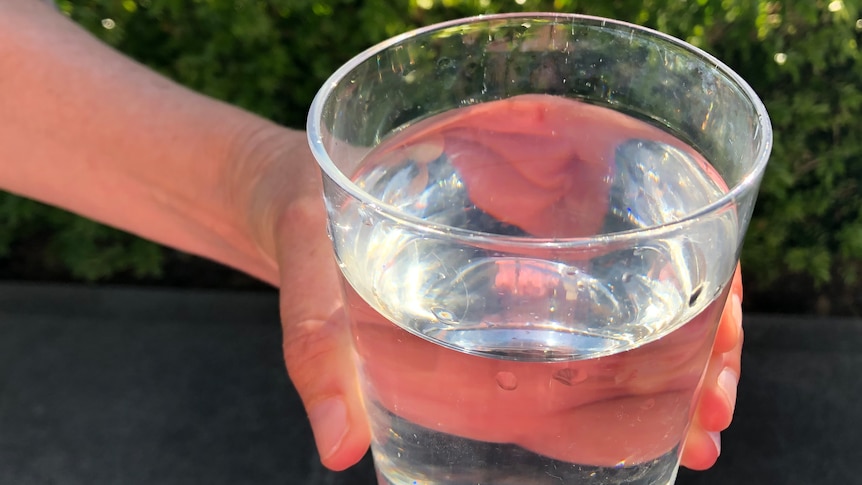Almost 200,000 Australians are often forced to drink water containing unsafe levels of uranium, arsenic, nitrates, fluoride and E.coli, according to the peak body for water suppliers.
Key points:
- Almost 200,000 people in remote Australia don’t have access to drinking water that consistently meets health guidelines
- 40 per cent of locations affected are remote Indigenous communities
- Researchers say too many bureaucratic layers allow for blame shifting and inaction
A further 400,000 people across Australia regularly drink water that fails aesthetic standards, a new Water Services Association of Australia report has found.
Researchers discovered unsafe drinking water in 115 locations, while hundreds more had water that failed aesthetic standards.
Towns and communities in the Northern Territory, South Australia, Queensland and Western Australia returned the worst water quality results, with remote Indigenous communities found to be the most affected by unsafe drinking water.
Jackie Mahoney and Pam Corbett, who live in Alpurrurulam, 500 kilometers north-east of Alice Springs on the NT-Queensland border, say poor water quality causes a wide range of illnesses and problems.
“It makes you itchy … and causes kidney problems and makes you sick in the stomach,” Mr Mahoney said.
“People with sensitive skin were treated for scabies, but it wasn’t scabies. Children’s scalps were dry and itching, and lots of calcium on the taps and clogged pipes caused problems.”
The community recently installed a filtration system which, they said, had helped to improve the water quality, but it did not remove everything and many people still suffered health issues because they had been forced to drink poor quality water for years.
“Before that it was worse,” Ms Corbett said.
“We didn’t know we were drinking no-good water. It made our stomach sick, and… our kids.”
Ms Corbett said she and her partner had approached governments, the Central Land Council and other funding bodies for a new water bore for the community but progress had been slow.
“I’m worried because of our kids, their future, the next generation. We need to fix this. We need new water soon, ASAP,” Mr Mahoney said.
“It’s our homeland. We’re there for life and we should have good water.”
600,000 rely on poor quality drinking water
The Water Services Association of Australia report shows 115 locations across remote Australia exceeded safe guidelines at least once in 2018-19, while 408 locations did not meet aesthetic standards, affecting more than 600,000 people.
More than 40 per cent of all locations surveyed were remote Indigenous communities, the report said.
But association executive director Adam Lovell said the number of locations and breaches of the guidelines actually could be much higher because there was not enough testing being done.
“There’s hardly any data to understand what the water quality looks like,” he said.
“When we talk about closing the gap, we don’t know what that gap actually looks like right now.”
Unacceptably high levels of elements like uranium or arsenic could result in long-term chronic health issues, Mr Lovell said, but the most common risk was E.coli.
“It’s immediate. If a water supply is not being disinfected properly then there’ll be gastrointestinal problems in the house,” he said.
“Over the longer term you’ll see that the chemical impacts build up and build up and build up and they’re the chronic impacts, which are much harder to see immediately and then much harder to treat.”
‘Blame shifting’ over water quality
Mr Lovell said in Australia’s major cities there were usually hundreds of water samples taken a day, testing for microbial contaminants like E.coli and chemicals.
“Australian drinking water guidelines should preferably be legislated and regulated across all states and territories, which currently it is not,” he said.
Report author Eric Vanweydeveld said there were too many government departments and other organizations involved in service provision for remote communities, which led to blame shifting and inaction.
“If there is a water leak in the street, and you are a member of a remote community and you try to understand ‘who do I need to talk to fix this leak?’, you will deal with probably seven or 10 different departments ,” he said.
The report has recommended that the federal government spend $30 million to establish a national water monitoring program.
“That will help us understand what closing the gap looks like,” Mr Lovell said.
Steven Porter, from the Northern Territory Power and Water Corporation, said it had been working with the Central Land Council to secure $5.2 million from the National Indigenous Affairs Association to bring two new bores online but there was still a $1 million shortfall.
“In doing that we can access better sources of water and improve the quality of water for the local community,” he said.
.
